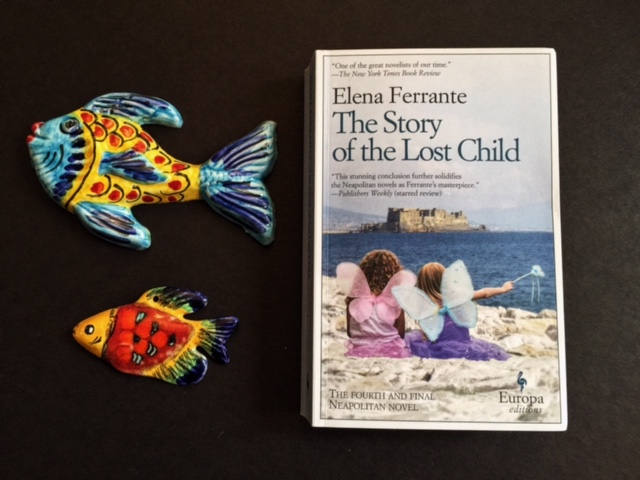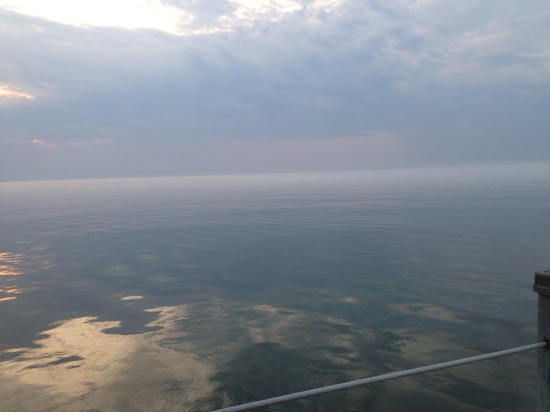
“He was a huge man – I’d guess six-five. Shaved head. Big black overcoat reaching below his knees. Big black dress shoes with rubber soles….
This is my chance, I said to myself, to relate to an oilman in a personal way, and perhaps even learn a little about his heart.
‘So,’ I said, “Do you have children?’
He knew where I was going with that. He turned to face me straight on. ‘Don’t you ever,’ he said, ‘ever. Ever. Ever.’ He paused. ‘Ever underestimate the power of the fossil fuel industry.'” – Great Tide Rising: Toward Clarity and Moral Courage in a Time of Climate Change, by Kathleen Dean Moore
 This is the scary, provocative, grieving, truthful, and energizing book to read if you want to come to grips with climate change and decide what, if anything, you are going to do about it.
This is the scary, provocative, grieving, truthful, and energizing book to read if you want to come to grips with climate change and decide what, if anything, you are going to do about it.
Great Tide Rising is not filled with climate science and facts about global warming and how to “solve” it with know-how and technology. In her book, Kathleen Dean Moore, an acclaimed nature essayist, philosopher, and environmental leader, frames climate change and habitat destruction as moral and ethical questions, guiding readers toward possible answers. Two of the gravest moral questions we face are:
Why is it wrong to wreck the world?
What is our obligation to our children, our children’s children, and the future?
Moore writes:
“I object…to the language of the sixth extinction and will not use it. The current extinction is something morally different from the first five. For all their horror, for all their calamitous power, the early extinctions were natural Earth processes, what the insurance industry calls ‘acts of God,’ beyond human control or culpability. This current great wave of dying is the direct result of human decisions, knowing and intentional, or willfully and wantonly reckless. That’s a difference of moral significance. It changes a calamity into a cosmic crime, a perversion of human power….To call this just the sixth in a long series of extinction cycles is what philosophers call a ‘category mistake’; it’s not the same thing. Extinctions one through five call us to awe. Number six calls us to rage – rage against the dying.”
For me, Great Tide Rising is a kind of primer, or bible, for our time. A bible in the sense that it contains Moore’s eloquent, clarifying language, as well as the wisdom of our greatest environmental prophets, including Aldo Leopold, Edward Abbey, Joanna Macy, and even the poet Mary Oliver.
A bible, too, because it urges us to bear witness to that which must change, and then to act. By “act,” Moore does not mean switching to eco-friendly light bulbs; she means for us to seek a larger purpose and vision for our lives in light of the disaster we face. Great Tide Rising is a kind of bible because it can be turned to often for wisdom and guidance as we head into a treacherous future.
“It’s a… stunning thing that we face climatic changes that will undermine the lives of our children – and very few people are talking about it….most likely it’s a variety of what American intellectual Lewis Mumford called a ‘magnificent bribe.’ The bargain is that each member of the community may claim every material advantage, every intellectual and emotional stimulus he may desire, in quantities hardly available hitherto even for a restricted minority: food, housing, swift transportation, instantaneous communication, medical care, entertainment, education’ – on the condition, I would say, that they never ask where it came from, or at what cost in human suffering, at what cost to the future, or to what long-term effect. That’s the deal: If they ask, they have to turn away from their glittering lives.”
Great Tide Rising refers not just to sea level rise, but to the growing groundswell of people questioning our way of life and committed to a profound shift in thinking. Joanna Macy calls this The Great Turning. In Macy’s words:
“The Great Turning is a name for the essential adventure of our time: the shift from the industrial growth society to a life-sustaining civilization…A revolution is under way because people are realizing that our needs can be met without destroying our world….Future generations, if there is a livable world for them, will look back at the epochal transition we are making to a life-sustaining society. And they may well call this the time of the Great Turning. It is happening now.”
Macy, Kathleen Dean Moore, and other environmental leaders do not know if humans and other life forms will survive what is to come, even if we take massive action. The deal is, we are to bear witness and act regardless of the outcome.
For Great Tide Rising, Moore interviewed Mary Evelyn Tucker, a professor at Yale Divinity School and the Yale School of Forestry and Environmental Studies, who spoke of the human instinct to create. Her words compose one of the most beautiful and hopeful passages in the book:
“Humans desire, more than anything else, to be creative, and we desire to participate in the creative processes, in the future and in life – that’s what having children is about. But we can be life-generating in a variety of ways – creative, participatory, oriented toward something larger than ourselves….
Our work is to align ourselves with evolutionary processes instead of standing in their way or derailing them. So our human role is to deepen our consciousness in resonance with the fourteen-billion-year creative event in which we find ourselves. Our challenge is to construct livable cities and to cultivate healthy foods in ways congruent with Earth’s patterns. We need the variety of ecological understanding so we can align ourselves with the creative forces of the universe.
Something is changing; an era is changing. If we are shutting down the Cenozoic era…the great work is to imagine how the new era can unfold. Our work in the world is not just a stopgap to extinction….We are part of the Great Work, as Thomas Berry would say, of laying the foundation of a new cultural era.”
I have only touched on highlights of Great Tide Rising. There is so much more, including a special appeal for grandparents to act on behalf of their grandchildren and future generations.




This post is written in memory of David Buckel, a civil rights lawyer and environmentalist who took his own life in Brooklyn’s Prospect Park in April. He self-immolated with fossil fuel to protest its use and left a note: “Most humans on the planet now breathe air made unhealthy by fossil fuels, and many die early deaths as a result — my early death by fossil fuel reflects what we are doing to ourselves. I hope it is an honorable death that might serve others.”












































